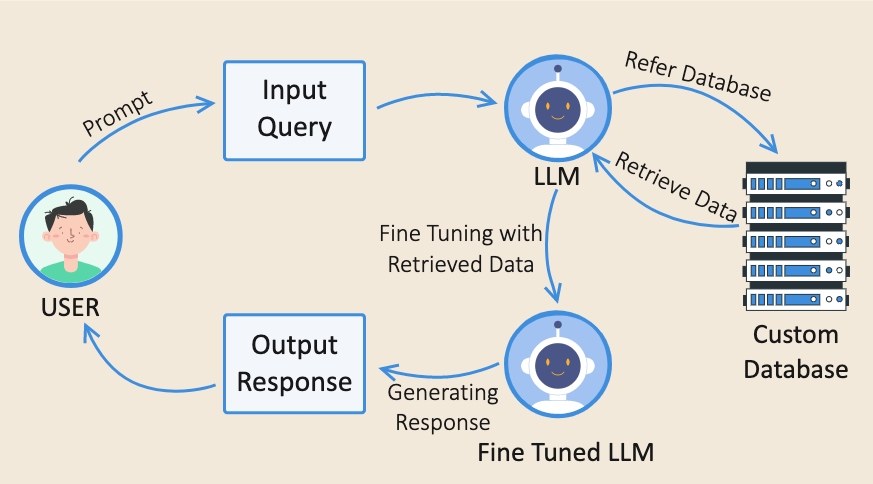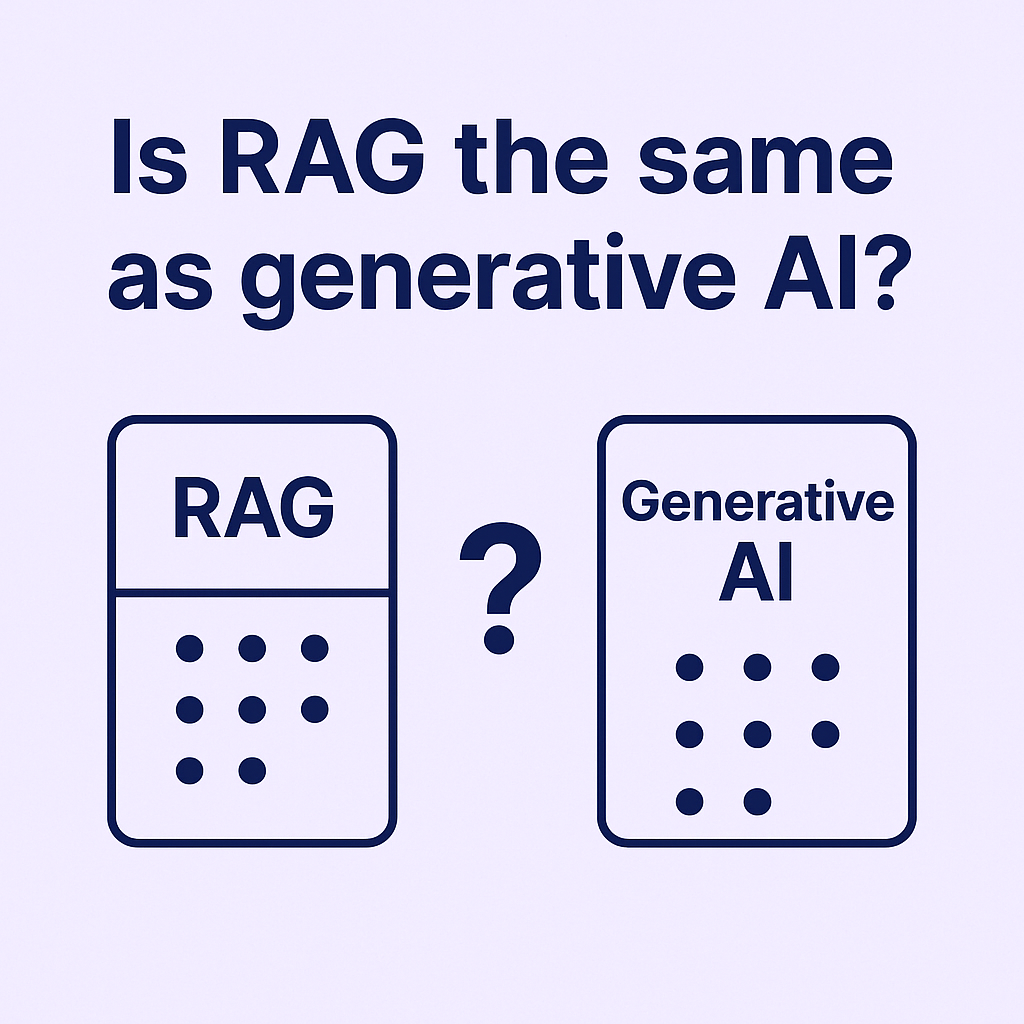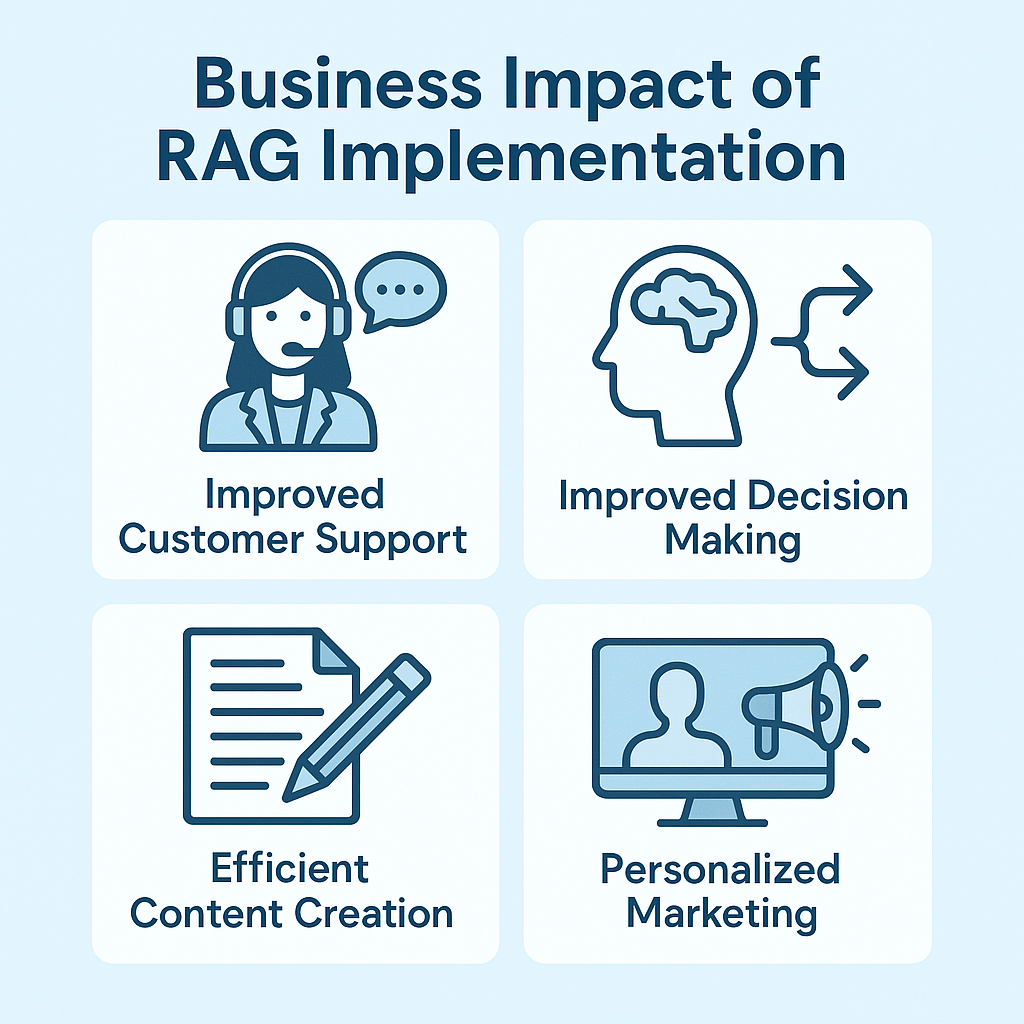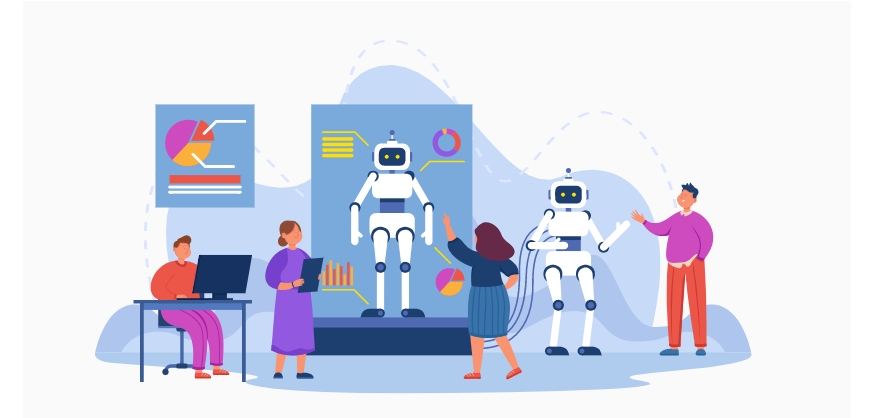
Why Businesses Must Embrace Retrieval-Augmented Generation (RAG) for Smarter AI
Businesses must keep up with the latest technological trends to cope with the ever-evolving technological landscape, or else the company can go out of business, just like Blackberry in the mobile industry.
One of the latest advancements in the artificial intelligence and machine learning space is RAG - Retrieval-Augmented Generation. It was first coined in 2020 by the lead author, Patrick Lewis, in his publication “undefineda class="code-link" href="https://arxiv.org/pdf/2005.11401" target="_blank"undefinedRetrieval-Augmented Generation for Knowledge-Intensive NLP Tasks.undefined/aundefined“
RAG LLM is an AI framework to enhance the accuracy and reliability of Large Language Models (LLMs) with information fetched from the external database. RAG in AI has emerged as a game-changing solution to overcome traditional limitations in data-driven tasks, and its successful adoption depends heavily on effective RAG implementation and continuous RAG development.
What is Retrieval-Augmented Generation (RAG)?
Retrieval-Augmented Generation (RAG) is a superimposed model of a retrieval-based and a generation-based model that combines the strengths of both models and produces outputs for the LLM that take information from outside its training dataset to produce the relevant output. The traditional approach relies solely on the training data to generate the responses for the user prompt. The traditional LLMs can be highly sophisticated; however, they struggle to provide precise information in a niche segment where the training data has been general.
Understanding how RAG works is essential to appreciating its value. RAG LLM addresses this limitation by using a retrieval mechanism to search the most relevant data through the large corpus of text provided for the niche category. After retrieving the relevant information, it uses the data to generate enhanced responses to provide a piece of contextually appropriate information and enrich the user experience with accurate and up-to-date information. This evolution signifies a crucial development of RAG in AI, improving how models interact with dynamic, external knowledge sources. Thoughtful RAG implementation and sustained RAG development ensure these benefits are realized efficiently across applications. Whether deployed as a standalone RAG bot or integrated into existing systems, its ability to generate context-aware responses makes it highly effective in dynamic business environments.
How Does Retrieval-Augmented Generation (RAG) Work?
If you're wondering how RAG works, it involves two main working components: (1) The Retriever and (2) The Generator.
Retriever: Based on the input query, the retriever component searches and retrieves the relevant piece of information from the large database. Advanced search algorithms and embeddings that capture the semantic meaning of the query are used to retrieve the data from the database.
Common retrievers are:
- Dense Retrieval: Deploys neural networks to retrieve the most relevant results.
- Sparse Retrieval: Deploys traditional techniques such as TF-IDF or BM25 to search for terms.
Generator: Based on the retrieved content, the generator element creates a coherent, contextually relevant response. This is done through combining the retrieved content with the language model's functionality, making sure the final output is informative and contextually relevant to the query.
The RAG LLM response generation process can be summarized in the following steps:
- Query Input: The user inputs a query.
- Document Retrieval: The retriever searches the corpus and retrieves relevant documents or information.
- Response Generation: The generator uses the retrieved information to produce a response that is contextually appropriate and enriched with accurate details.
- Output: The final response is delivered to the user.
This hybrid approach allows RAG LLMs to provide more reliable and informative responses compared to traditional language models. These advancements reinforce the broader trend of RAG in AI becoming essential for knowledge-intensive applications. However, the true value is unlocked through a well-executed RAG implementation that aligns with business needs and technical infrastructure.
Maybe you can ask, “Is RAG the same as generative AI?”
No, it’s not. RAG is a technique that gives more accurate answers by using external knowledge, not just the information already inside the AI model. This distinction is key to understanding the unique value proposition of RAG in AI.
What is the Business Impact of RAG Implementation?
Is RAG for business the right choice? Let's uncover how Retrieval-Augmented Generation (RAG) can impact your business to grow and increase the bottom line. Various business operations can be impacted by RAG implementation, particularly customer service, content creation, and data analysis. Here are some of the key business impacts:
undefineda class="code-link" href="https://www.seaflux.tech/portfolio/customer-service-portal-using-WhatsApp" target="_blank"undefinedImproved Customer Supportundefined/aundefined: RAG implementations in AI-based customer service software can be greatly enhanced by delivering more precise and contextually appropriate answers to customer questions. A RAG bot in customer-facing roles can provide immediate, accurate assistance by pulling relevant information from knowledge bases, resulting in increased customer satisfaction and lower response times. This shows the potential of RAG for business when deployed in customer support.- Improved Decision Making: RAG helps the LLMs generate detailed reports and insights with the help of external data relevant to your business, aiding in more informed decision-making processes.
- Efficient Content Creation: Retrieval-Augmented Generation (RAG) can generate high-quality content relevant to the content creators that is well-researched and factually accurate. This is how we can use RAG for improved content creation, saving time and effort in the content creation process.
- Personalized Marketing: The business impact of Retrieval-Augmented Generation in content marketing can be a classic example of personalizing marketing efforts. RAG will generate content that is tailored to the specific needs and interests of individual customers. This aligns well with growing trends in marketing with AI, where personalization and relevance drive engagement and conversions.
Benefits of Retrieval-Augmented Generation (RAG)
The benefits of RAG in business operations are manifold:
- Accuracy: RAG has more accurate and current data, less likely to contain errors.
- Contextual Relevance: Retrieval-Augmented Generation ensures that the generated responses are contextually relevant. RAG enhances content relevance and user experience.
- Efficiency: The hybrid approach can process queries that are complex more efficiently, responding rapidly and accurately.
- Scalability: RAG can be scaled to accommodate large numbers of queries and information, thus being appropriate for companies of any size.
- Innovation: RAG implementation can fuel innovation by allowing new use cases and applications that were not possible before with the classical models.
These benefits of RAG demonstrate its potential to transform how businesses interact with data and customers, driving both performance and innovation across industries.
Challenges of Retrieval-Augmented Generation (RAG)
Retrieval-Augmented Generation can be a challenging task to achieve. Despite its numerous benefits, implementing RAG comes with its own set of challenges:
- Complexity: RAG's hybrid nature adds complexity to its implementation and maintenance. A set of sophisticated algorithms and substantial computational resources is required to implement it accurately.
- Data Quality: The quality of the underlying data used will deeply impact the effectiveness of RAG. It will generate rubbish and inaccurate responses with poor-quality or outdated data.
- Integration: Existing business processes would require significant changes in order to integrate RAG with existing systems and workflows, which can be challenging and require additional efforts. A strategic approach to RAG implementation can mitigate these challenges and reduce time-to-value.
- Cost: Retrieval-Augmented Generation is a new and developing technology, and its computational resources and expertise require a special skill set, which can be costly to implement and maintain, particularly for small and medium-sized enterprises.
- Bias: Ensuring that the retrieved information is unbiased and representative of diverse perspectives remains a challenge.
What is the future of Retrieval-Augmented Generation (RAG)?
The future of RAG looks promising with several emerging trends:
- Advanced Retrieval Techniques: Next-generation retrieval methods such as hybrid retrieval models (combining sparse and dense retrieval) and context-aware retrieval are gaining traction. These techniques improve both precision and recall, leading to more contextually accurate and reliable outputs.
- Multimodal RAG: RAG is no longer limited to text. Emerging multimodal RAG models integrate information from text, images, audio, and video, making them suitable for use cases in healthcare imaging, legal discovery, content moderation, and marketing with AI, where leveraging diverse media sources can boost campaign effectiveness. These developments continue to refine how RAG works across a broader range of industries and highlight the ongoing innovations in RAG development.
- Integration with Other AI Techniques: RAG will increasingly be integrated with advanced AI methods such as reinforcement learning, transfer learning, and knowledge graphs. These combinations allow for continuous learning, personalization, and more human-like reasoning.
- Auto-RAG Pipelines with LLM Orchestration: ools like LangChain and LLM orchestration frameworks are simplifying RAG implementation through low-code/no-code interfaces, automated prompt chains, and easier database connections—democratizing access to RAG-based workflows.
These advancements collectively define the future of RAG as a powerful enabler of smarter, more adaptive AI systems. As these innovations mature, businesses adopting RAG will be better positioned to deliver cutting-edge solutions and remain competitive in an AI-driven marketplace.
End Note
Retrieval-Augmented Generation (RAG) represents an innovative advancement in the field of AI and machine learning. RAG for business presents a significant opportunity for companies seeking to enhance operations and customer experience. The retrieval-based and generation-based models strengthen RAG's response accuracy and contextual relevancy. Yet companies need to be prepared to overcome the barriers to its adoption, such as complexity, data quality, integration, cost, and even bias. With proper planning and implementation, RAG can be a potent driver of innovation and business success. Embracing RAG in AI will be critical for organizations aiming to stay ahead in a rapidly evolving digital world.
We, at Seaflux, are an AI solutions provider and Machine Learning enthusiasts offering cutting-edge undefineda class="code-link" href="https://www.seaflux.tech/ai-machine-learning-development-services" target="_blank"undefinedAI development servicesundefined/aundefined and custom AI solutions to help enterprises worldwide. From intelligent automation to undefineda class="code-link" href="https://www.seaflux.tech/voicebot-chatbot-assistants" target="_blank"undefinedRAG chatbot developmentundefined/aundefined, our specialists can assist you in unleashing their full potential. Have a query or want to discuss RAG projects? Schedule a meeting undefineda class="code-link" href="https://calendly.com/seaflux/meeting?month=2025-04" target="_blank"undefinedhereundefined/aundefined.

Krunal Bhimani
Business Development Executive










